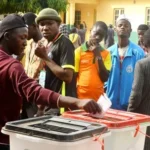In the contemporary construction industry, the focus on sustainable practices has become paramount. As part of this shift towards green building, the significance of Structural Building Information Modeling (BIM) has been increasingly recognized. Structural BIM is a digital representation of physical and functional characteristics of a facility that serves as a shared knowledge resource for information about a facility. It provides a reliable basis for decisions during its life cycle from inception onward. This write-up aims to discuss the importance of Structural BIM in Sustainable Construction.
Linking BIM and Sustainable Construction
Sustainable construction involves the use of practices that are environmentally friendly, energy-efficient, and resource-saving. This encompasses the entire construction process, from the choice of materials to the maintenance of the finished building. Structural BIM services aid in this process by facilitating better decision-making, improving the accuracy of sustainable design attributes, and allowing for the prediction and assessment of environmental impacts.
Also Read N: Elevate Your Harvest with Mars Hydro LED Grow Lights
Enhancing Decision-Making
One of the primary benefits of Structural BIM is its ability to enhance decision-making in the construction process. In the context of sustainable construction, this means making informed choices about materials, design, and construction methods. By visualizing the entire design and construction process in a digital model, BIM allows for the assessment of different options and their respective impacts on sustainability. This can lead to a decrease in waste, more efficient use of resources, and overall, a more sustainable construction process.
Also Read P: What Is Electoral Malpractice? A Simple Guide
Improving Accuracy of Sustainable Attributes
BIM models not only represent the physical attributes of a building but also the functional and energy-related attributes. This includes data on energy use, daylighting, and material properties, among others. By integrating these attributes into the design process, BIM can improve the accuracy of sustainable design choices. For instance, the use of BIM can help in optimizing the building orientation, selecting energy-efficient materials, and designing effective insulation systems. This possibility to test and simulate different scenarios is crucial to reducing the environmental footprint of the building.
Predicting and Assessing Environmental Impact
Structural BIM also plays a vital role in predicting and assessing the environmental impact of a construction project. By incorporating life-cycle analysis tools, BIM can estimate the environmental impact of different design choices and construction methods. This includes the emissions produced during the construction process, the energy use of the finished building, and the potential for recycling or reusing materials at the end of the building’s life. This predictive capability is crucial in sustainable construction, as it allows for the reduction of adverse environmental impacts before they occur.
BIM and Cost Efficiency in Sustainable Construction
Structural BIM is not only beneficial for the environment but also for the finances. It can lead to significant cost savings in the construction process. By improving the accuracy of the design and reducing the amount of waste produced, BIM can decrease the overall cost of construction. Moreover, by enabling the selection of energy-efficient materials and systems, BIM can also lead to savings in the operational costs of the building. Therefore, BIM can contribute to making sustainable construction not only environmentally friendly but also economically viable.
The Future of BIM in Sustainable Construction
With the increasing recognition of the importance of sustainability in the construction industry, the role of BIM is set to grow further. Future advancements in BIM technology could allow for even more accurate modeling and prediction of environmental impacts, further enhancing its value in sustainable construction. Moreover, as more construction companies adopt BIM outsourcing services, it could become a standard tool in the industry, enabling a widespread shift towards more sustainable practices.
The Conclusion
In conclusion, Structural BIM plays a pivotal role in sustainable construction. By enhancing decision-making, improving the accuracy of sustainable design attributes, and allowing for the prediction and assessment of environmental impacts, BIM facilitates a more sustainable construction process. As the construction industry continues to move towards more sustainable practices, the importance of Structural BIM is likely to continue to grow. It is, therefore, essential for construction professionals to understand and utilize BIM in their work to achieve the goal of sustainability.






